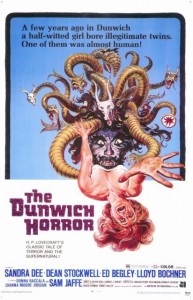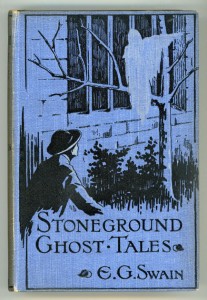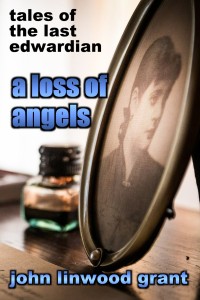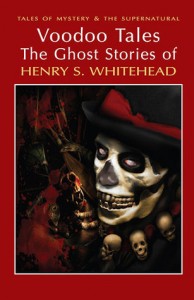Put up your hand if you like adjectives. Good.
Now put up your pale, twisted claw of a hand with its squamous, flaking skin and flesh beneath which seems eldritch, almost fungoid, like some blasphemous mockery of humanity, if you really like adjectives.
Now we’re cooking.
Science fiction literature, one of my early loves, used to be plastered with things which were impregnable, unstoppable, invincible and impenetrable. The adjective ruled. Then, with equal frequency these things were pregnated, stopped, vinced and penetrated to satisfy the plot. Most SF idiots like me remember the joys of E E Doc Smith. Boy, did that man love his work.
Horror fiction, on the other hand, has always fallen back on the good ole’ indescribable.
There are two sound reasons for this. The first is that the author genuinely wants to convey something which has an impact beyond normal sensory perception, or is beyond rational description. The very best authors use subtlety, nuance and the effect on the characters to give you what you need.
And sometimes it is best not to describe. Graphic portrayal can be a risk. It reminds me of the two versions of the film Cat People. In the original 1942 version (unless my memory is shot), the menace came from shadows and suggestion. It was unsettling. The 1982 version showed what was happening quite openly and lost out in the process. But it did have a David Bowie theme song, so you takes your chances…
The second good reason for taking the indescribable route is that the author can’t think of a physical manifestation scary enough, and if they actually describe it, the readers will go “Meh! and throw the story away. I think that’s a great way out. Throw in some hints, write the rest of the story and hope that the readers can imagine things better than you can write. Why should writers do all the work?
There is a third reason, but it’s unkind to mention it. So I will. There are authors who can’t use adjectives (or similes) very well, and think that they have found an escape clause.
The creature was so big, no, enormous, well, really large, like a, what’s the word, you know, those bloody great fish, or maybe an eel but like those congers, not the jellied ones, and it had tendrils as large as, oh bugger…
The creature was indescribable.
My particular bugbear is where something supposedly can’t be put into words and then, in the next paragraph (or fifteen), everything is depicted in graphic detail anyway.
Under the guttering light of our one remaining torch, we finally managed to break open the tomb. I slid the stone lid to one side, my arms aching, and there, inside, we saw the indescribable horror that had once been St John Arthur Masters…
“Oh, wait a minute.” said Sandra, squinting. “I’ll tell you what we’ve got here. It’s a ratty old man with half his skin falling off, wearing a shroud which badly needs a wash. He’s deliquescing a bit, which is icky, and his nails need clipping. I think we should set fire to him and go for a pint.” Sandra’s First Pony by J Linseed Grant
On the other hand, I actually enjoy those stories which astonish by their use of language. By which I mean the ones where an earthquake has released a slumbering thesaurus. There are so many lurid adjectives that you have no idea what the central monster/spectre/alien looks like. It has been stamped to death by the thesaurus, which raises its head at the end and roars in triumph. I love a good B-movie.
I read a fantasy short story (no names) in bed last night, on my bargain-basement tablet. And then I read it out to my partner, and to the dogs. We laughed and wept; we shuddered. The adjective count was so high that we genuinely could not understand what had happened, even on a second reading. There wasn’t any space left for nouns and verbs.
H P Lovecraft, one of my favourite authors, was not exactly immune to the curse of the adjective. Which is to say, he used too many of them. Indescribable, antiquarian and shunned spring to mind. In fact, I had to check with The Arkham Archivist. Apparently hideous is the clear winner, with 260 uses in his complete works.
 A subtle film interpretation of Lovecraft’s writing
A subtle film interpretation of Lovecraft’s writing
Out of curiosity I picked up Lovecraft and Derleth’s The Lurker at the Threshold, which was in a pile by my desk, and looked up some descriptions of monster situations. Adjectives formed 20 – 25% of such passages. And I think you’ll agree that such an exercise demonstrates quite clearly that… I don’t have a life.
Fortunately Lovecraft’s ideas, and the impressions he conveys, far outweigh most quibbles about his writing style. He sought to portray events and beings beyond human comprehension, always a fun way to spend an evening. He also had some awareness of his own approach, as demonstrated in this passage from The Dunwich Horror:
It would be trite and not wholly accurate to say that no human pen could describe it, but one may properly say that it could not be vividly visualized by anyone whose ideas of aspect and contour are too closely bound up with the common life-forms of this planet and of the three known dimensions.
He gets points for that. And I am quite keen on “teratologically fabulous”, also from Lovecraft’s The Dunwich Horror. You don’t come across combinations like that every day.
Don’t get me wrong. I make my own mistakes when writing. My particular weakness has always been for metaphors, where people have granite faces and spider hands, that sort of thing. It works really well for a golem infested with arachnids, but it can be a tad overused. Mea culpa.
In conclusion, because this entry is already too long, I can only hope that I’ve used the word “indescribable” so much that you can’t stand to hear it or come across it any more. In which case, my work is done.
In an unnameable, tenebrous and decadent sort of way, of course.


